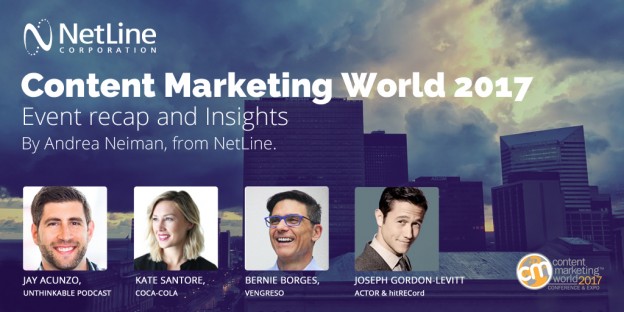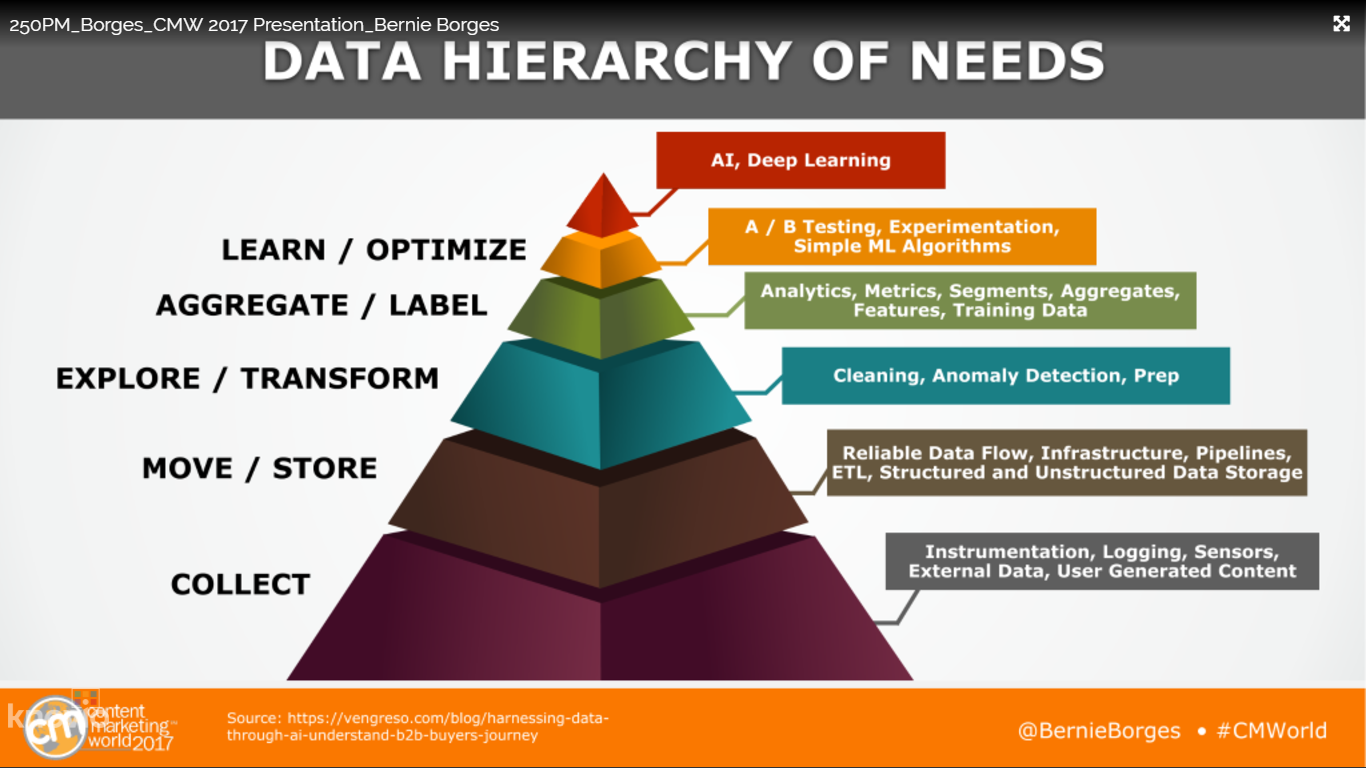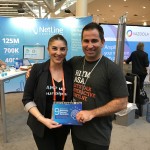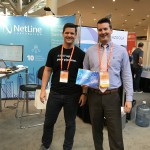As soon as you set foot into Cleveland’s airport, there’s no denying you’ve arrived at the crossroads where eager business minds grappling to understand their role in content marketing meet those vying to defy conventional perceptions. In its sixth installment, Content Marketing World delivered 4 days of inspiring speakers, engaging vendors, and mind-freeing networking opportunities. No other content marketing-based event embraces such levels of authenticity—the people truly make this event great.
CMWorld 2017 challenged the content marketing status quo and focused on empathy and its creative uses to connect with customers for long-term business growth. Events of its class traditionally attempt to define the following year’s marketing landscape with new technologies and methodologies, but CMWorld 2017 kept it simple without sacrificing depth. This depth dared to touch the audience on a more personal level and it confirmed for me that there continues to be a waging gap in the content marketing landscape defined by fear of the unknown, undefined, and uncertain. That gorge is the difference between an emotional pursuit for truth versus a rational one. Much of the business world continues to shy away from truly figuring out what makes people tick, not realizing that numerical results don’t tell the full story nor can technological advancement that expedites the learning process teach us the essence of the consumer mind.
Thankfully there is a growing movement of brave souls willing and able to take that vulnerable leap and set new trends. Thank you to Content Marketing Institute for giving the business world permission to be vulnerable. You saw this clearly with keynote speakers, such as Jay Acunzo from Unthinkable Podcast, Kate Santore from Coca-Cola, and the charming and incredibly talented actor Joseph Gordon-Levitt.
Evolving Perceptions–Stop Being Average.
Most marketers use the same lens to understand content marketing year after year—analyzing trends and attempting to demystify it all in the name of “thought leadership.” But trying to articulate step-and-repeat processes through long and short-form content, validated by a 200% increase in Twitter followers, and supported by 3% engagement on LinkedIn.com doesn’t do the new age of content creation, technology, and the people consuming justice. Running a successful business is no longer just about measuring ROI. In fact, it doesn’t nearly tell the bigger, long-term story. After all, business is becoming increasingly unpredictable and the variables that cause our confident projections of growth to fail are the people that decide to change their mind about our products. How do we foresee and measure these indicators of change?
Neither the followers, the shares, nor an extensive content library will grant you long-term customer loyalty nor indicate their future abandonment. As Jay Acunzo from Unthinkable Podcast boldly pointed out in his Wednesday morning keynote, following these traditional key performance indicators just makes you average. It’s no longer about figuring out a new way to get clients to renew contracts because your bigger, bolder UX promises to deliver X% more “workflow gains”—a product marketer’s worst descriptor, by the way. Nor is it about ensuring you send out a perfectly worded email under 100 characters on Tuesday at 9am because that’s what’s been measured to be the “perfect time” to prospect. It’s time to think outside the box—not by industry standards, but by yours.
The New Return: Return on Experience
“ROI” is so 2000-late. Yes folks, we’ve reached a paradox. Why is using content to embolden business not just about measuring its “ROI” anymore? Because selling and marketing to businesses is about reaching people. We can redefine year after year how to manage our content marketing strategy to deliver “smarter”, “faster”, and “more seamless” programs that yield less churn and higher pipeline conversions, but we often do this at the expense of the brand’s human experience.
“When we make the process the point, instead of the results, we get better end results.”
Indeed, Jay. To expand on this, it means trusting your intuition—know deep within what’s best for your business despite what the competition might be doing or how the industry is defining the space. Einstein called it trusting a feeling; Malcolm Gladwell defined it as “rapid cognition;” others more commonly as “subconscious reasoning.” No matter how you define your business success, set the trend, don’t follow it. Break the mold, don’t soften it.
The Digital Age of Content Consumption and Emotional Transformation
The point is to not focus on ROI as the sole contributor to a program’s success nor as the determining factor of customer satisfaction. Rather, don’t let it consume and distract from the creative process that is necessary to empathize with customers and establish brand loyalty.
Remember when the Net Promoter Score gained traction in 2003? This was the pre-cursor to businesses learning how to think beyond 1’s and 0’s—dollars and cents. Since then we’ve evolved the age of customer interactions beyond customer satisfaction and have introduced many creative methods to extending solutions in exchange for information from our customers. Two things have largely pioneered this movement: content and the internet. The mediator: human exchange.
These more authentic exchanges have been powered by, what Joseph Gordon-Levitt describes, three key pillars:
- Communities that offer individualism (versus crowds that treat the mass as a lump sum)
- Fair compensation promoting free culture
- Collaboration enabling socializing
Joseph highlighted how his company, hitRECord, encourages artists to work on collective projects, including books, records and short films. All posts on the website can be adapted by anyone in the hitRECord community, resulting in large collaborative works.
With the power of the internet, new methods of communicating, collaborating, and exchanging dialogue have helped gather information that in turn is being used to better understand audiences. Artificial Intelligence has become a staple in bot-based customer service modules. We even have IBM’s Watson predicting how customers will interact with your product by predicting personality characteristics, needs, and values all through written text. Our use of technology to understand consumption at an individual level and at scale has never seen such momentum.
But as business people, we can’t get too excited, distracted, and even lost, with the vastness of data that technology offers. At the core, we still have the human experience. Without it, brands would lose their meaning, their purpose. As Joseph humbly reminded us,
“Focus on the community as a collective to expand on your narrative.”
The Intersection Between Stories and Brand Value
Nobody tells a better brand narrative than Coca-Cola. Whether the subject be polar bears, puppies, astronauts, or the indigenous of Africa, Coca-Cola reminds us that it’s how you make people feel that leaves a lasting impression. “It’s not about Coke’s stories about Coke. It’s about your stories of Coke,” said Kate Santore, Senior Integrated Content Marketing at Coca-Cola. She continued that 80% of the online content that contributes to Coke’s stories comes from the brand’s fans.
Coke teaches us the importance of telling timeless stories in a timely manner.
With all these great high-level theories on how to be different and to constantly redefine your brand based on the customer experience, how do we actually migrate from the status quote?
Leverage Existing Customer Relationships
In the session, “5 Most Influential Topics for B2B Marketers,” Bernie Borges from Vengreso and Find and Convert explained that it’s not about getting a bunch of famous people to speak about your brand. It’s about livening your brand through,
- Genuine relationships and having a partnership mindset
- Consistent and relevant content
- Customer-centricity, allowing customers to be influencers
It’s important to understand the data hierarchy of needs so that you know what to do with customer intel. It will help you connect the dots and understand the customer journey.
Image: Data Hierarchy of Needs by Bernie Borges.
How Content Distribution and Consumption Challenges the Demand Generation Status Quo.
We felt particularly lucky to leverage CMWorld as a platform to help promote our new ebook, 9 Experts on Rethinking Demand Generation, which extensively goes into the various areas of reshaping your content marketing and demand generation perception. You can check out a summary of the book here.
Keep It Simple—Trust your gut.
We were challenged to think simple, listen more, and trust our intuition—all traditionally counter intuitive to business hustle. But as we remind ourselves that we’re marketing to people, the task to curate and create content in order to engage and nurture customer relationships no longer becomes so daunting.





